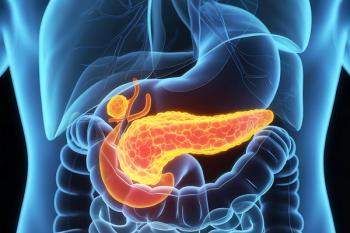
- The Application Notebook-07-02-2010
- Volume 0
- Issue 0
Faster Analysis of Naproxen Tablets — Improvements on the USP Method
The costs associated with pharmaceutical testing are considerable, and many lab managers are seeking ways to reduce costs by reducing solvent usage and improving productivity while still using the LC instruments in their lab.
William Long, Agilent Technologies Inc., Wilmington, Delaware, USA.
The costs associated with pharmaceutical testing are considerable, and many lab managers are seeking ways to reduce costs by reducing solvent usage and improving productivity while still using the LC instruments in their lab.
Compendia methods from the United States Pharmacopeia (USP) are widely used in pharmaceutical drug product and raw materials testing. However, not all methods in the USP use modern technologies and may be more time consuming than desired for today's lab. These methods can be updated by making adjustments following the recommendations in USP chapter <621>. The ranges for adjustments are: column length, column material particle size and injection volume. While other paraneters can be adjusted according to the USP, none of those were needed to improve the throughput of this method. Modifications outside these ranges are considered changes and require revalidation of the method.
Naproxen is classified as a non-steroidal anti-inflammatory drug or NSAID and is available as a generic tablet. The USP contains a method for the analysis of Naproxen tablets which references using an L1 (C18), 5 µm column.
Poroshell 120 columns are a new LC column choice that can provide improved performance on a typical LC instrument. These columns have a 2.7 µm superficially porous particle that can provide faster analysis and high resolution in shorter columns for testing more samples in less time on existing LC instruments. The columns are available in a C18 bonded phase, a typical L1 material.
In Figure 1, a 4.6 × 150 mm, 5 µm, L1 or C18 column is used as the starting point for the method. The conditions are unchanged and both a Poroshell 120 EC-C18 4.6 × 10 mm, 2.7 µm and 4.6 × 50 mm, 2.7 µm column are compared.
Figure 1: USP method for naproxen tablets - 4.5Ã faster analysis on Poroshell 120. Common conditions: Mobile phase: 50:49:1 MeCN:H2O acetic acid; Flow rate: 1.2 mL/min; Peaks: 1 =naproxen 2 =butyrophenone.
The performance requirements of the method are exceeded when changing from the 5 µm L1 column to both of the superficially porous 2,7 µm C18 columns. The analysis on the 100 mm column is 2× faster than the original method and on the 50 mm long column the method is 4.5× faster than the original method. Either column choice improves productivity.
Conclusions
Laboratories performing compendia analyses with fully-porous LC columns can benefit from the increased speed, resolution and sensitivity that superficially porous, Poroshell 120 columns can provide without having to replace existing instrumentation. Faster analysis times resulting in higher throughput and greater productivity can be achieved with Poroshell 120 columns. Method adjustments to these compendia methods with shorter length columns and the smaller 2.7 µm particle size provide these improved results.
Agilent Technologies Inc.
2850 Centerville Road, Wilmington, Delaware 19808, USA
tel. +1 800 227 9770
E-mail:
Articles in this issue
over 15 years ago
Sulphur and Halide Determination by Combustion Ion Chromatographyover 15 years ago
High Resolution UHPLC Analysis of Naringin in Grapefruit Juiceover 15 years ago
Quantitative Analysis of the Composition of Tea Tree Oilover 15 years ago
Rapid Analysis of Pesticides in Difficult Matrices Using GC–MS–MSNewsletter
Join the global community of analytical scientists who trust LCGC for insights on the latest techniques, trends, and expert solutions in chromatography.





